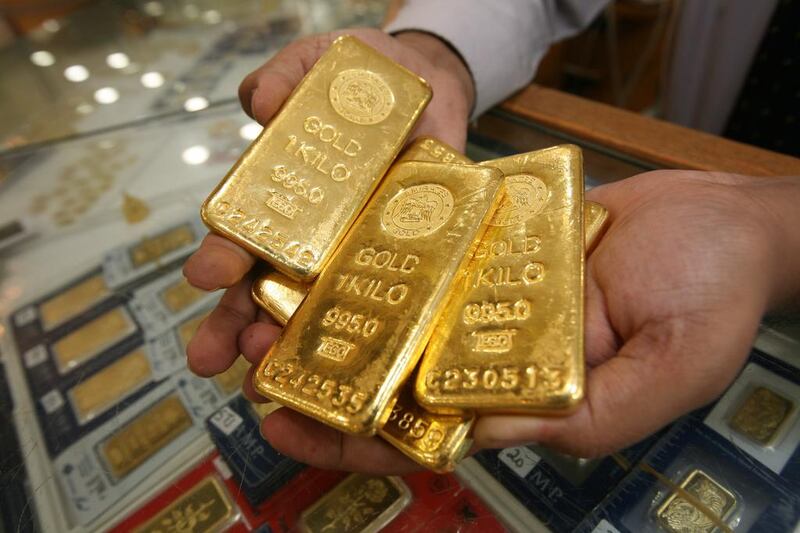In the last trading month of the year, there were green lights, which then flashed deep red across the board on global stock exchanges. The flashing red-green lights were on the back of a ceasefire in the implementation of trade tariffs between China and the US followed shortly by conflicting messages via Twitter from US President Donald Trump and his administration on the likelihood of a deal with China.
Parallel to the geopolitical and trade tensions, there was a shift in US monetary policy from a hawkish tone towards neutral, according to signals from the US Federal Reserve. At least, that’s how the markets interpreted the comments from Fed chairman Jerome Powell, who said the central bank’s rates are near neutral levels. The US dollar then rapidly fluctuated in value on the back of recession fears following an inverted yield curve which appeared last week.
Amid the market turbulence, the gold price responded to the volatility and investor mood by gaining on safe-haven buying. Going forward into 2019, a set of important factors are set to drive gold’s price direction, starting with the value of the dollar. The US currency has been broadly stronger than the majority of its developed peers and most emerging market currencies for much of 2018 on the back of monetary tightening and rising interest rates.
_________
Read more:
Global stocks struggle to recover amid US-China trade tensions
What's next for the oil price - $100 by the end of the year?
US dollar and gold: bulls to take on the bears in Q4
_________
The Fed’s seeming pullback from determined hawkishness triggered a sell-off in US Treasuries and a drop in the dollar’s value in early December. Whether this effect will last into 2019 is a matter of speculation because of the Fed’s careful hedging on its policies. In the process of approaching a neutral rate position, the central bank has kept its options open and keeps the markets guessing as to whether it will hike rates once or four times in 2019.
The fact is, emerging market currencies and economies are taking a beating from the strong dollar and higher interest rate regime in America. In hindsight, it’s a dangerous economic and monetary game to bait the twin catastrophes of a global slowdown in parallel with a domestic slowdown. High borrowing costs could dampen investment and consumer spending, pouring cold water on economic growth. A neutral monetary policy would go a long way towards boosting investor sentiment and confidence, possibly averting a further easing in the local and global economy. It would also likely support the gold price if the dollar weakens.
There’s a second important factor to consider in the race between the dollar and gold for value – the trade tensions between the US and China. Gold has been less affordable in countries that buy the most of the world’s supply of the precious metal – India and China. The trade dispute has pressured economic growth and investment sentiment in those nations, resulting in weaker demand for gold. How will the trade story evolve? The ceasefire may not last past the agreed-upon three months, but in the meantime, demand for physical gold in Asia could recover, potentially supporting its value.
The gold price was also supported during the volatility in global equities during October and November, so it’s fair to expect that if increased investor confidence carries over into 2019 and the volatility dies down, the precious metal would face resistance to any upward movements.
The same cannot be said for political risks stemming from Europe, which would probably support gold’s value. Connected with the Brexit drama in particular is the flight of central banks, institutional investors and retail investors from the at-risk British pound into gold. A parallel phenomenon may be seen in connection with the dollar if one of two things happen; unexpectedly high inflation or a sell-off in dollar-linked financial instruments in the case the Fed tips from neutral to dovish.
In short, the hot favourite for the most consistent value in 2019 is gold. The dollar may see much more volatility and weakness because investors expect fewer interest rate hikes in the medium term. More risks have appeared for the dollar given the threat of a recession in the next year or so. The gold price may sustain over $1,200 and see more scope for added value provided the Fed shows more signs of pulling back from its hawkish stance, further weakening the dollar.
Hussein Sayed is the chief market strategist at FXTM






